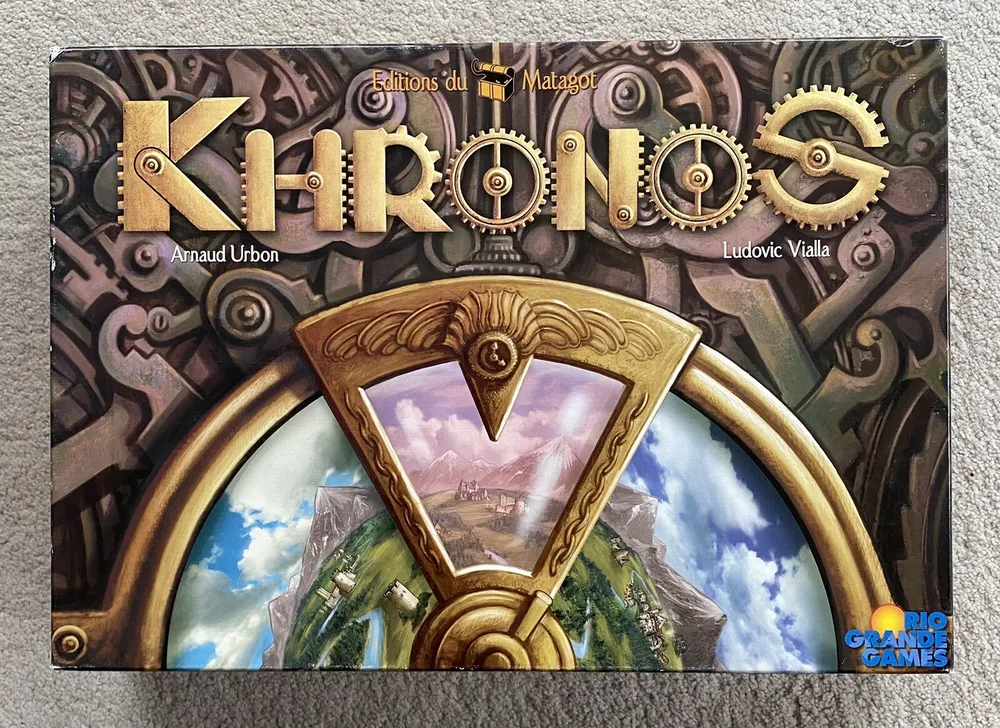Khronos (2006)
Khronos
Khronos is a board game designed by Ludovic Vialla and Arnaud Urbon for two to five players. The game is set in a fictional medieval world where players represent powerful lords and their faithful companions fighting for influence throughout time.
Why is Khronos Popular?
Khronos is a popular and significant board game due to its unique Gameplay Mechanics of Khronos and immersive theme. The game allows players to:
– Build domains by laying tiles representing various types of military, religious, and civil structures.
– Develop their domains by strategically placing action cards.
– Engage in a fight for influence throughout time, with each player aiming to become the most powerful lord.
Game Components of Khronos
How To Setup Khronos
To set up Khronos, players start by arranging the three game boards, each representing a different age. Each player receives a starting amount of coins and coloured cards. The building tiles are shuffled and placed within reach of all players.
Gameplay Mechanics and Game Objective
Player Experience
Khronos offers a dynamic and strategic gameplay experience where players must balance building in different ages while managing the impact of their decisions across time. The game requires careful planning and adaptation to the changing landscape of each age.
Pros
Cons
Personal Thoughts on Khronos
Khronos is ideal for players who enjoy strategic games with a unique twist. It is particularly suited for those who appreciate games that require planning across multiple stages or ages. However, it may not be the best fit for casual or new board game players due to its complexity. Overall, Khronos is a challenging and engaging game that rewards strategic thinking and adaptability.
We are supported by our audience. When you purchase through links on our site, we may earn an affiliate commission, at no extra cost for you. Learn more.

